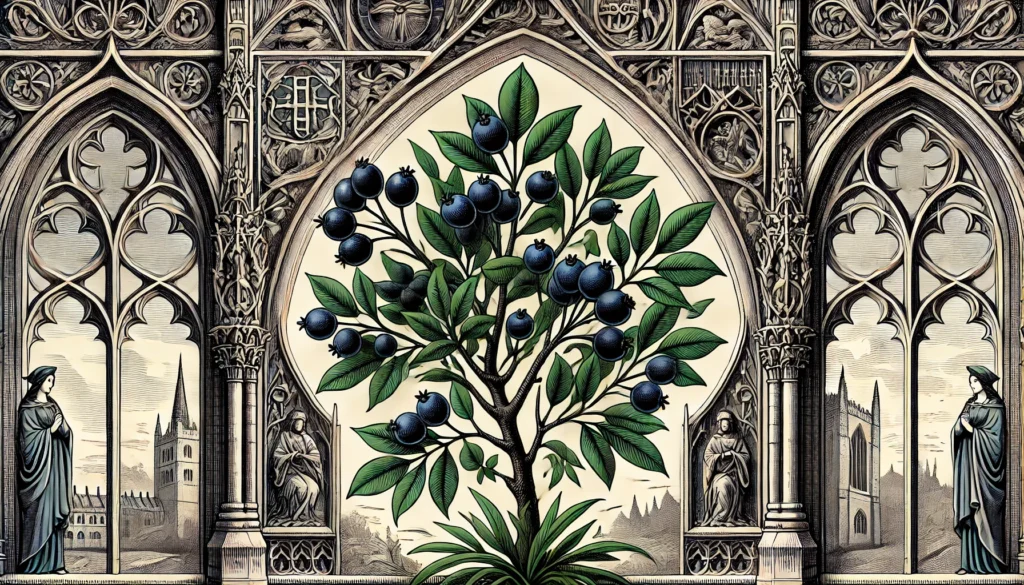

Home » Cat Plants » How Dangerous is the Inkberry Plant for Cats?

Inkberry (Ilex glabra), also known as Appalachian tea, evergreen winterberry, Canadian winterberry, gallberry, and dye-leaves, is a species of evergreen holly native to the coastal plain of eastern North America.
This shrub is toxic to cats if ingested, causing mild to moderate symptoms. Inkberry plants can commonly be found in landscapes of the middle and lower East Coast of the United States.
Ingestion may cause mild gastrointestinal upset, but is generally not life-threatening.
Ingestion can result in mild symptoms like vomiting, diarrhea, or drooling. Rarely fatal but may require veterinary care.
Eating these plants can lead to more pronounced symptoms like abdominal pain, lethargy, or difficulty breathing. Veterinary intervention may be necessary.
Ingesting even small amounts can cause severe symptoms like organ damage, seizures, or cardiac failure without rapid treatment.
All parts of these plants are extremely poisonous to cats and can quickly lead to death, even with immediate veterinary care.
** Please note: Please note that toxicity level can vary based on the amount ingested and the specific cat. It's always best to keep these plants completely inaccessible to cats and seek immediate veterinary care or call the poison hotline if you suspect your cat has ingested any part of a toxic plant.
If a cat ingests parts of the inkberry plant, such as the leaves or berries, they may experience symptoms of toxicity. These symptoms are primarily gastrointestinal and rarely severe, including:
In rare cases where a large amount of the plant is ingested or if the cat is exposed to winterberry oil containing high concentrations of toxic compounds, symptoms may become more severe.
If you suspect your cat has ingested inkberry, take them to the veterinarian along with a sample of the plant, if possible. Your vet will perform a physical examination, noting the severity of symptoms and any compromised vital signs. They may also conduct blood and urine tests, as well as radiography, to rule out other causes of gastrointestinal distress.The veterinarian will likely diagnose winterberry poisoning based on:

A: Inkberry is indeed toxic to cats. Ingestion can lead to symptoms such as vomiting, diarrhea, and lethargy.
A: If a cat ingests Inkberry, it may show symptoms like vomiting, diarrhea, and lethargy. These signs indicate a negative reaction to the plant’s toxins.
A: To keep your cat safe from Inkberry, ensure the plant is kept out of reach. Additionally, you can use pet-safe barriers or deterrents to prevent your cat from accessing the plant.
A: Yes, there are several cat-safe alternatives to Inkberry. Plants like catnip, spider plants, and Boston ferns are non-toxic to cats and can be safely kept in homes with pets.
A: If your cat eats Inkberry, contact your veterinarian immediately. Prompt action is crucial to address any potential toxicity and prevent serious health issues.
A: Inkberry is harmful to cats because it contains toxic compounds that can upset their digestive system. These toxins can lead to vomiting, diarrhea, and other health problems in felines.
Inkberry is a shrub native to the coastal plain of eastern North America, ranging from Nova Scotia to Florida and west to Louisiana. It is most commonly found in sandy woods and peripheries of swamps and bogs. Native Americans first used dried and roasted inkberry leaves to brew a black tea-like drink, giving rise to the common name “Appalachian tea.”
The plant is often cultivated as an evergreen shrub in USDA zones 6 to 10. Gallberry honey, produced by bees feeding on inkberry flowers, is a highly rated honey locally produced in certain parts of the Southeastern United States.
Please note: The information shared in this post is for informational purposes only and should not be considered as veterinary medical advice.
🐾 A hilarious or heart-melting cat video
🐾 Our latest paws-on review of a cool cat toy